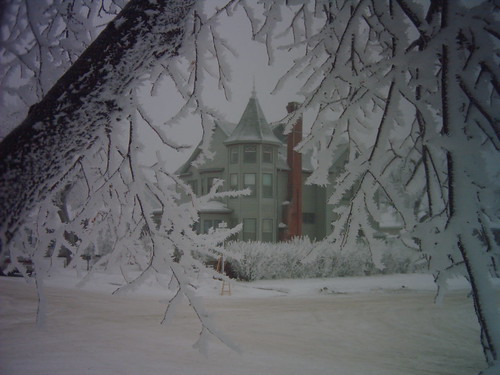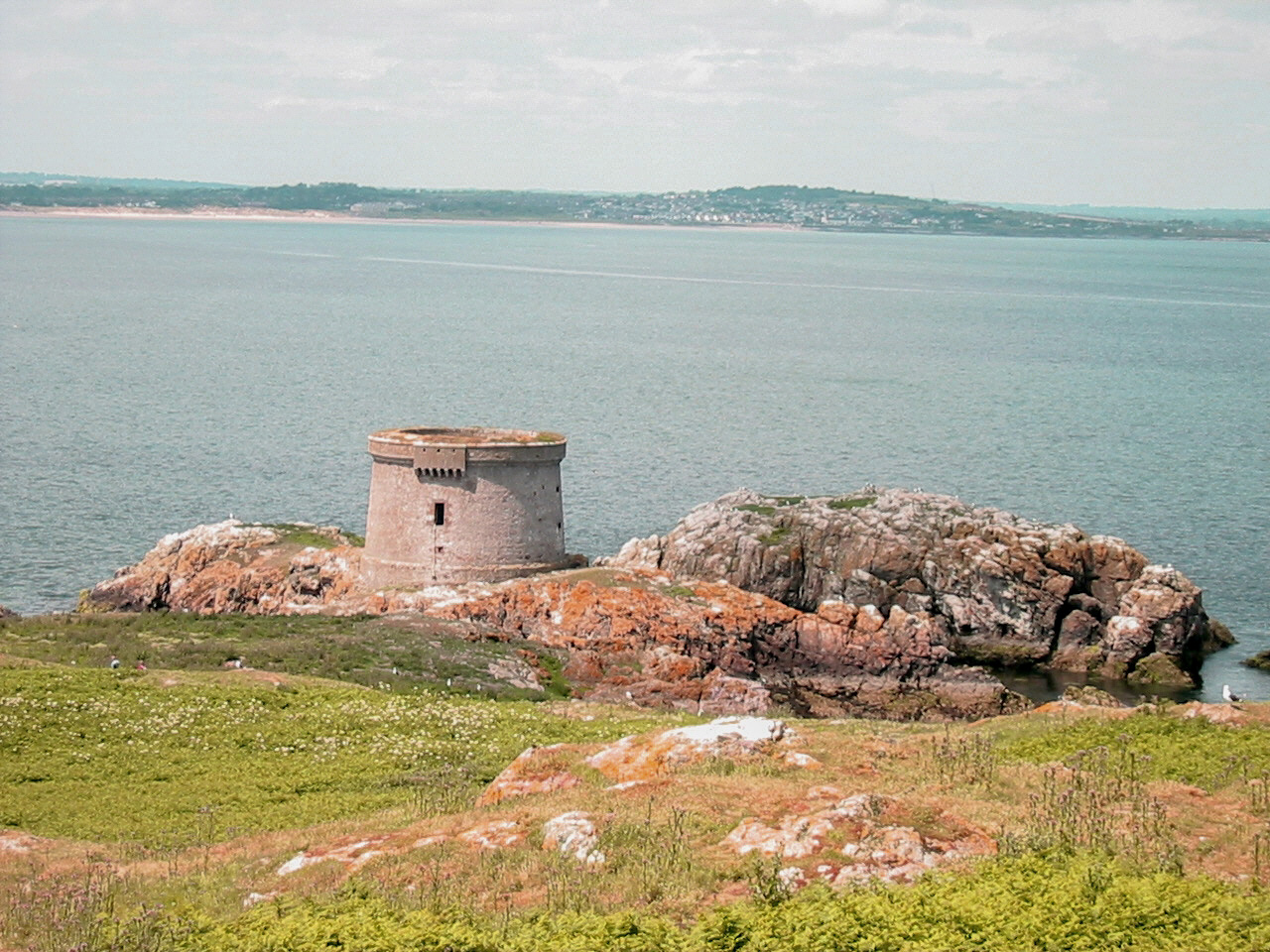Blue Highways: Backoo, North Dakota
Unfolding the Map
One thing I like about Blue Highways is William Least Heat-Moon's (LHM) willingness to go off his beaten path and explore. Backoo was not on his route but he went there anyway. He didn't find much, but it's the exploration that's the reward - and who knows, he just might have missed something had he not gone. Go north to Backoo and locate it on the map!
Book Quote
"A sign pointed north to Backoo. Backoo, North Dakota, may not be the only town in America named after an Australian river (the Barcoo), but then again, maybe it is. I went to see it, or, as it turned out, to see what was left, which was: the Burlington Northern tracks, a grain elevator, grocery, boarded-up school, church, and a thimble of a post office."
Blue Highways: Part 7, Chapter 9
 The abandoned Backoo school house that LHM mentions in Blue Highways. Photo at the Ghosts of North Dakota website. Click on photo to go to host page.
The abandoned Backoo school house that LHM mentions in Blue Highways. Photo at the Ghosts of North Dakota website. Click on photo to go to host page.
Backoo, North Dakota
There doesn't seem to be much to write about in terms of Backoo, because I couldn't really find a lot of information on the town. But I think it is interesting that someone may have named the town after the Barcoo River in Australia. There is another possible story about the name that the Wikipedia entry below cites: that Backoo was named after the Azerbaijani city of Baku. However, there is no supporting information that I can see. And with an Australian accent, it is very easy to see how Barcoo could become Backoo.
In the 1980s, Australia seemed to become the favorite country of the U.S. public. Part of Australia's popularity was due to Paul Hogan, the Australian actor and comedian who portrayed Crocodile Dundee in three movies. Depending on how old you are, you may remember the "That's not a knife..." scene. Or perhaps this 80s Australian tourism commercial aired in the U.S starring Hogan.
Part of the appeal also was due to popular music coming out of the land down under into the United States. The Bee Gees, though they moved from Australia to the United Kingdom in the late 60s, had huge hits with their songs for Saturday Night Fever. AC/DC was a 1970s rock phenomenon and the Little River Band had a string of hits that I particularly liked in the late 70s. During this time, the U.S. also enjoyed hits by Helen Reddy and Olivia Newton-John (who also starred in some hit movies). In the 80s and 90s, Australian music seemed to explode. Men at Work had a huge hit celebrating Australia in Down Under. Midnight Oil became a favorite group of mine because of their hard driving punk tinged rock with a social justice message. Around the early 90s Kylie Minogue, a former soap star, began burning up the pop charts.
I was always captivated by the idea of Australia. Of course, we all learned the story of how Australia was founded as a penal colony for Great Britain, which when I was young had me envisioning a country full of dangerous criminals. What they didn't tell us then was that most of the people sent to Australia either committed petty crimes, were in debt or were turned in by those who wished them ill. They also didn't tell us that many more people immigrated by choice to Australia than were sent. I also enjoyed the wild history stories of Australia that in many ways reminded me of the American West. I thrilled over the original "Iron Man" story of Ned Kelly, the Australian bushranger and outlaw who fashioned a homemade suit of plate armor and shot it out with police.
When ESPN first became a sports network, it didn't have any official contracts with any major American sports leagues. Instead, it ran different sports from around the world and provided me with my first look at Australian Rules Football. "Footy," as it's known in its home country, was the strangest thing I think I ever saw. It seemed to be a combination of soccer, rugby, American football, and even basketball because the person with the ball had to bounce it every three steps. I watched every broadcast I could of this new game for about a month until something else, probably a girl, caught my teenage mind.
I couldn't put down Bill Bryson's account of Australia titled In a Sunburned Country (a book I'm considering for a future Littourati subject). His accounts of some of the wonders and the quirkiness of Australia has made me want to go there even more. He had a wonderful description of driving from Perth and listening to cricket games on the radio - he printed his version of the announcers calling the cricket play-by-play that cracked me up but also reminded me of nights driving and listening to baseball games. I would think that a foreigner traveling through the U.S. and hearing baseball on the radio would think it the same type of gibberish that Bryson describes on hearing radio cricket.
Bryson's hilarious accounts of the all the poisonous things that live in Australia (which by far has the most concentration of deadly poisonous creatures on Earth) still hasn't deterred me from wanting to visit and explore the country. Even a Crocodile Hunter episode (yes, he was from Australia also) about the 10 most dangerous snakes in the world (I think they all live in Australia) hasn't cooled my desire. As I tell my wife, millions of Australians exist alongside funnel web spiders, box jellyfish, taipans, red-backed spiders, brown snakes and other dangerous things and the vast majority of them don't die.
Of course, the Australians themselves make me want to come to Australia. I haven't known many, but those I've known are extremely nice and have always encouraged me to visit their country. They are also very adventurous people, and the Australians I know always seem to be doing interesting things and traveling a lot, even to the most remote locations in the world, just to see what's there. I think Australia is remote, but if you live there, then every other place on the planet must seem like it's extremely far away.
I have a goal to visit Australia and perhaps if I do, I will see where the Barcoo River is located. I will eagerly explore its cities, like Melbourne and Sydney. I would love to go to the other end to Perth, which I hear is a wonderful place. Of course, one must visit the interior, the Outback. I would like to hike and explore and hopefully not get killed by something poisonous. And I think I'd have the time of my life. I think that there are probably a lot of similarities between Australia and the United States, given their shared history as British colonies with indigenous populations (and the bad history with those indigenous) and with a lot of space to roam in. But I think that it would be so different and beyond my current knowledge that it would be just an amazing experience. I can't wait until I get the chance to see it.
Musical Interlude
In the late 70s, when I was fourteen, I was filled with hormones and desperately infatuated with a new girl who came to our school named Laura Johnson. I thought that she was the most beautiful creature I had ever laid eyes on up to that point, and I ached for her. Unfortunately, I was ungainly and awkward, shy, didn't think much of myself and was not very suave or debonair around girls. And I was not one of her crowd. The popular guys and jocks went out with her and all I could do was watch her and yearn for her from afar. But this song, by the Little River Band from Australia, was a big hit at that time and it was to this song, Lady, that I imagined myself slow dancing close to her. I don't know what happened to her or where she is now, but I can feel the faint echoes of the ache in my heart whenever I saw her that year.
If you want to know more about Backoo
Next up: Cavalier, North Dakota




 Thursday, January 26, 2012 at 4:51PM
Thursday, January 26, 2012 at 4:51PM







